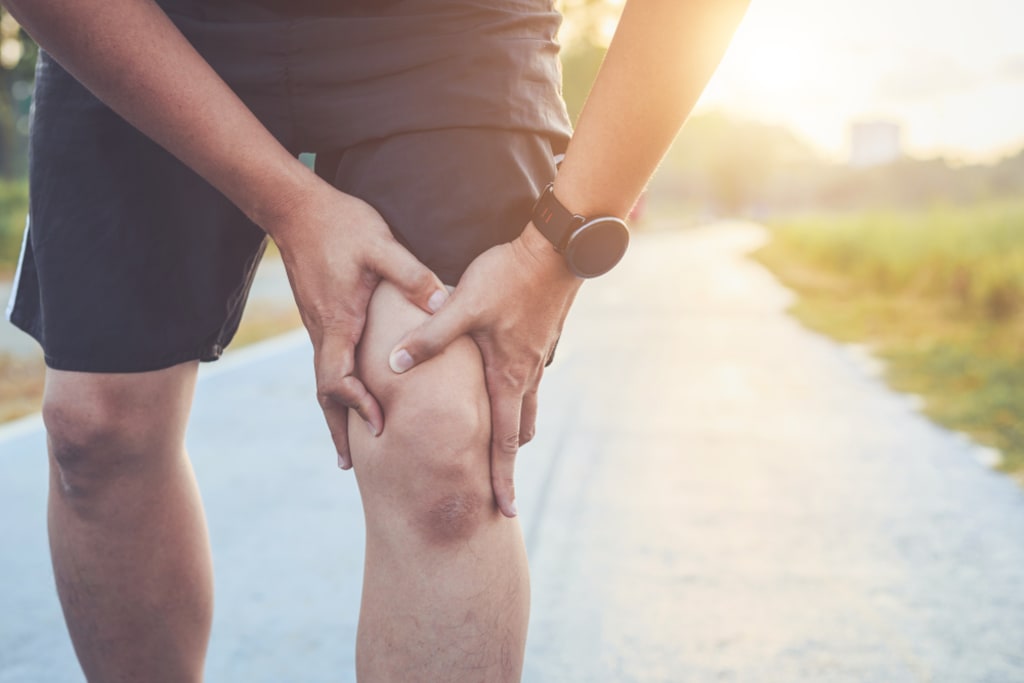How Does Knee Pain Lead to Patellofemoral Arthritis?
Discomfort, decreased mobility, and a lower quality of life are some effects of this illness. To adequately prevent and treat patellofemoral arthritis, it is crucial to comprehend how knee pain can develop into the condition.

People of all ages frequently have knee discomfort, which has a variety of underlying causes. Patellofemoral arthritis is a severe disease linked to knee pain. Discomfort, decreased mobility, and a lower quality of life are some effects of this illness. To adequately prevent and treat patellofemoral arthritis, it is crucial to comprehend how knee pain can develop into the condition.
What is Patellofemoral Arthritis?
Patellofemoral arthritis, sometimes referred to as patellofemoral joint osteoarthritis, is an arthritic condition that affects the Knee's patella-to-femur joint. When the protective cartilage covering the joint surfaces deteriorates, it results in a common degenerative disease that causes pain, inflammation, and restricted mobility.
The complex knee joint supports the body's weight and allows fluid mobility. The femur is the thigh bone.The patella slides over the femur as the Knee bends and straightens.
Patellofemoral arthritis might develop as a result of knee discomfort that is chronic, or that is not effectively treated. Several things, such as trauma, overuse, inflammation, or anatomical irregularities, can cause knee pain. The following are some ways that knee pain can influence the onset of patellofemoral arthritis:
Cartilage damage: The smooth tissue that lines the ends of bones in a joint and helps to lessen friction while moving is called cartilage. When exposed bone surfaces grind against one another due to cartilage degradation, it can cause pain, inflammation, and eventually patellofemoral arthritis. The cartilage in the knee joint can be harmed by severe strain or repeated impact, such as in cases of overuse or injury.
Malalignment: The patella must perfectly align with the femur for optimum function. Knee discomfort, though, might cause this alignment to be off. For instance, problems like patellar tracking disorder or patellar instability can make the patella stray from its usual course, putting more strain and wear on the surfaces of the joint. Patellofemoral arthritis may develop as a result of this over time.
Muscle imbalances: The knee joint is supported and stabilized by the muscles surrounding it during movement. Patellofemoral arthritis can develop due to increased stress on the patella and femur.
Previous knee injuries: Patellofemoral arthritis risk is increased by prior knee injuries such as fractures, dislocations, or ligament tears. These wounds may alter the knee joint's typical structure and functionality, causing long-term damage and eventually arthritis.
Aging and wear-and-tear: Patellofemoral arthritis is characterized by persistent knee pain that produces over time due to regular wear and strain on the joint.
What are the Treatments for Patellofemoral Arthritis?
Patellofemoral arthritis is often treated with conservative techniques designed to reduce discomfort, enhance joint function, and slow the condition's progression. For more challenging situations, surgery may occasionally be a possibility. The following are some typical therapies for patellofemoral arthritis:
Pain Management: Over-the-counter painkillers like paracetamol or nonsteroidal anti-inflammatory medicines (NSAIDs) may be suggested to manage pain and lessen inflammation. There are also topical creams and gels for pain treatment.
Physical Therapy: To strengthen the muscles around the Knee, increase joint stability, and increase joint range of motion, physiotherapy treatment is frequently advised. To reduce pain and enhance function, therapeutic stretches, exercises, and other modalities like heat or cold therapy may be used.
Activity Modification: Reducing the tension on the patellofemoral joint and reducing discomfort can be achieved by altering activities that aggravate symptoms, such as avoiding high-impact or repetitive stress exercises. High-impact activities may be substituted with low-impact workouts like swimming or cycling.
Assistive Devices: Utilizing assistive tools, such as a knee brace or orthotic shoe inserts, can improve the knee joint by offering support, stability, and alignment, which decreases pain and enhances function.
Weight Management: The stress on the knee joint can be lessened by maintaining a healthy weight or dropping weight if overweight, relieving pressure and reducing symptoms.
Injections: Injections of corticosteroids may be advised to lessen pain and inflammation in the Knee joint. Due to possible side effects, they are often restricted to a few injections annually.
Surgical Options: Surgical procedures could be considered in more severe cases where conservative therapies fall short. To remove damaged cartilage or smooth off rough joint surfaces, arthroscopic surgery, which uses small incisions and a camera to see and treat the joint, may be performed. Realignment surgery (osteotomy) may occasionally be required to address the patella or femur misalignment. Joint replacement surgery, such as partial or complete knee replacement, may be considered in difficult situations with extensive joint damage.
Conclusion
In conclusion, several factors, such as cartilage damage, misalignment, inflammation, muscle imbalances, prior knee injuries, and aging, can cause knee pain to progress into patellofemoral arthritis. To stop the onset of patellofemoral arthritis, knee discomfort must be treated promptly and effectively. This could entail consulting a doctor, doing the proper workouts, and maintaining a healthy diet.





Comments
There are no comments for this story
Be the first to respond and start the conversation.